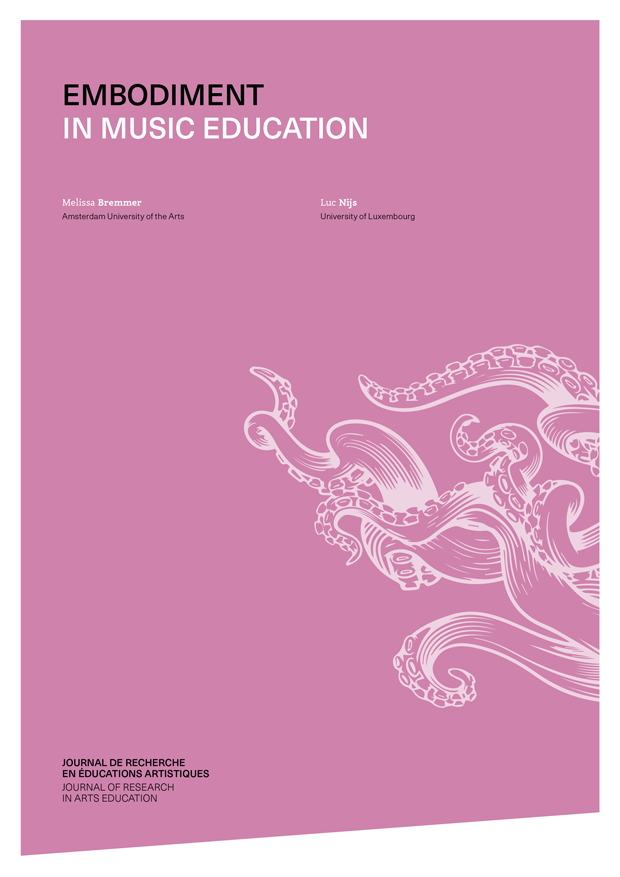Embodiment in music education
DOI:
https://doi.org/10.26034/vd.jrea.2024.4717Keywords:
music education, embodied music cognition, embodied pedagogy, instrumental music education, general music educationAbstract
In this article, we give an overview of theoretical and empirical research that exemplifies how and why the body of the student and teacher plays a pivotal role in music learning and teaching processes. We will discuss the concepts of entrainment, alignment, and prediction, that have been developed within the theory of embodied music cognition, and their relation to music learning. Furthermore, we will discuss how physical modelling, gestures and touch are important embodied teaching strategies. The article concludes with some suggestion as to how these concepts and strategies can be put into the music educational practice.

Downloads
Published
Issue
Section
Categories
License
Copyright (c) 2024 Melissa Bremmer, Luc Nijs

This work is licensed under a Creative Commons Attribution 4.0 International License.
The CC-BY licence authorises the sharing and adaptation of the document provided that the work is credited, a link to the licence is included and it is indicated whether any modifications have been made.


